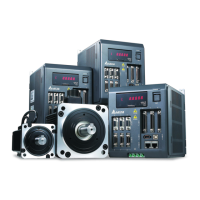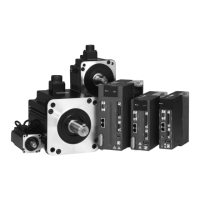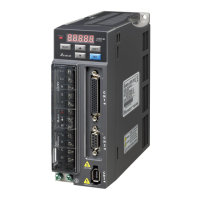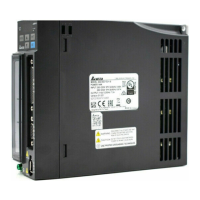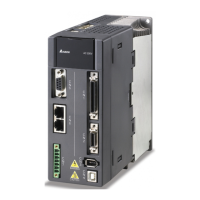Application Examples ASDA Series Application Note
3-120 March, 2015
Troubleshooting after alarm is cleared
If mechanism stops operating because alarms occur, it might result in relative phase shift. If the
system could correctly correspond the phase of master axis to the E-Cam before operation, it
can save the material during the phase correction process.
For film feeding axis, the additional setting is unnecessary since it has applied the function of
synchronous capture axis and E-Cam positioning. When the alarm is cleared, the system will
automatically read the mark and position.
For cutter axis, macro D can be used to do cam positioning before operation. When motor is
servo Off or stops because of the alarm, if the actual position is different from the E-Cam position,
macro D can calculate the error amount after re-servo on. And the value will be written into the
specified incremental position control PR. Then, trigger this PR and return the E-Cam to the ideal
position.
The following conditions have to be established when using macro D:
1. Macro D can only be used in the cyclic E-Cam curve which starts from the same position
every cycle.
2. E-Cam axis is still engaged when Servo Off or alarm is cleared (P5-88.X1 = 1).
3. E-Cam curve scaling has to be set to 1. (P5-19 = 1).
4. Value of P2-52 has to be set as the error between the slave axis position at the end of the
cycle and the position at the beginning of the cycle (Last point - First point). See Figure
3.8.23.
5. Motor’s start position has to be at 0 degree of E-Cam curve.
Figure 3.8.23 Marco D
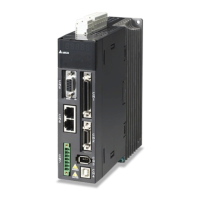
